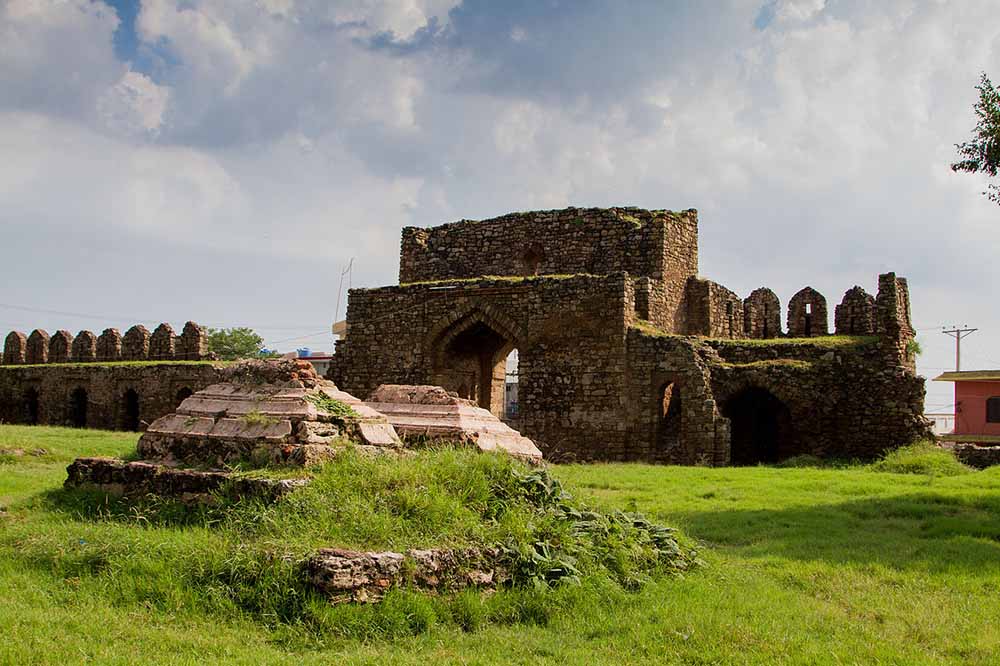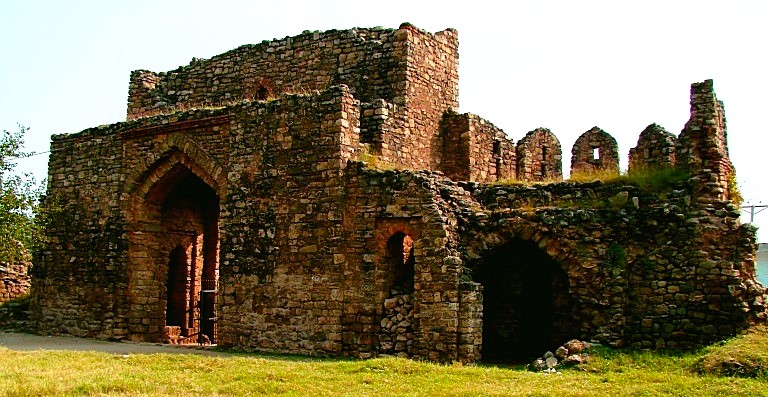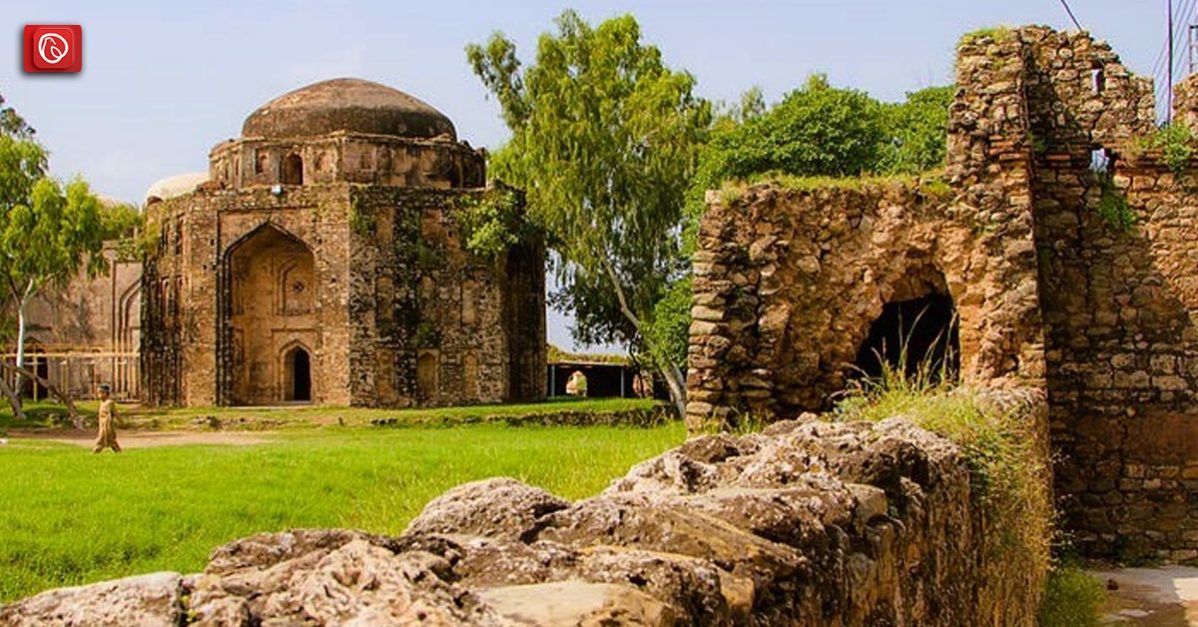Rawat Fort is a prominent historical landmark that dates to the early 16th century. Originally constructed as a defensive bastion against the Pashtun ruler Sher Shah Suri, this architectural marvel graces the Pothohar Plateau of Pakistan, positioned near Rawalpindi, Punjab. Serving as a testament to culture and architecture, this site safeguards archaeological treasures and monuments within its formidable walls.
In this blog, Graana.com has discussed everything that you need to know about Rohtas Fort.
Overview

Situated 17 kilometres east of Rawalpindi along the Grand Trunk Road, Rawat Fort holds roots dating back to the 2nd century. Notably, the fort encompasses a mosque distinguished by a rooftop that affords panoramic views of the Mankiala stupa. Adjacently positioned is the renowned Rohtas Fort, an edifice erected by Sher Shah Suri to solidify authority over the Gakhar region.
History
Saltine-e-Delhi originally established Rawat Fort as a caravanserai in the 15th century. Interestingly, speculation surrounds the possibility that this construction was overlaid onto a preexisting Ghaznavid-era fort, which was built in 1036 CE.
During the 16th century, the caravanserai’s significance was amplified when the Gakhar clans, staunch supporters of Mughal Emperor Humayun, fortified the structure. The purpose behind this strategic enhancement was to safeguard the Pothohar plateau from the imminent threat posed by Sher Shah Suri’s forces.
The Battle of Rawat Fort took place in 1546. It involved Gakhar chieftain Sultan Sarang and Afghan monarch Sher Shah Suri. Sultan Sarang was captured and suffered in the fort before Sher Shah Suri’s troops executed him.
Layout
Constructed in a distinctive square design, the Rawat Fort boasts two entrances and houses a quadrangular edifice topped with a dome in its inner precinct. Within this enclave, an array of graves is interspersed, adding to the fort’s historical aura. Along the perimeter, one can find several compact chambers that might have once accommodated wandering merchants.
Within the fort’s confines, a mosque graces the landscape, featuring an impressive trio of domes. Additionally, the sacred grounds hold the tomb of the eminent Gakkar leader, Sultan Sarang Khan, alongside the resting place of his 16 valiant sons who fell in battle.
Positioned strategically along vital trade routes, the fort has etched its place in Punjab’s history due to its role in numerous historic conflicts. Today, it is a sought-after destination for tourists, inviting them to embark on a journey through a crucial chapter of Pakistan’s past.
Conservation

The Rawat Fort, one of the largest forts in Pakistan, holds significant status as a Cultural Heritage Site within Punjab and falls under the administration of the provincial government. To safeguard this invaluable historical site, the government has earmarked funds for the execution of a comprehensive conservation initiative.
The initial phase of this endeavour entails an investment of 50 million rupees. This conservation plan has a strategic design to ensure that the forthcoming generations can fully grasp and value the profound historical import encapsulated by the Rawat Fort.
How to Reach
By Air
Islamabad International Airport is conveniently present within Rawalpindi. This airport is a hub for daily flights connecting various international and domestic destinations. Despite the city’s west seeing the construction of a new airport, people anticipate that its completion will take several more years.
By Train
Rawalpindi boasts its central railway station, facilitating regular services to many destinations across Pakistan.
By Road
An extensive network of roads intricately weaves Rawalpindi into a direct linkage with major cities including Lahore, Peshawar, and Taxila to the north. Local buses provide a comprehensive mode of transportation within the city, though tourists may not find this advisable.
By Bus
For longer distances, consider reputable long-haul operators like Skyways and Daewoo. Skyways offers direct services between Islamabad and cities such as Lahore, Peshawar, and Karachi. Daewoo has established its terminal just outside Rawalpindi on the road to Islamabad.
Frequently Asked Questions (FAQs)
Who built Rawat Fort?
The Ghakkar tribe constructed the Rawat Fort in the 16th century. At one point, the Ghakkars, a warrior tribe known for their high, fortified cities, ruled over the Potohar plateau.
Which clan built the Rawat Fort?
The Rawat Fort was built by the Gakhar clan, a branch of the Ghakkar tribe. Originally from the Swat Valley in Khyber Pakhtunkhwa, the Gakhars migrated to the Pothohar plateau in the 14th century. They quickly became a powerful regional force and built many forts, including the Rawat Fort.
Which city is Rawat in?
Rawat Fort is located in the city of Rawalpindi, Punjab, Pakistan. Rawalpindi is located about 17 kilometres east of the fort.
When was Rawat Fort built?
In the 16th century, builders likely constructed Rawat Fort around 1540. Its purpose was to defend the Pothohar plateau against Pashtun king Sher Shah Suri’s forces.
That is all about Rawat Fort. To read about Rohtas Fort, visit Graana blog.




